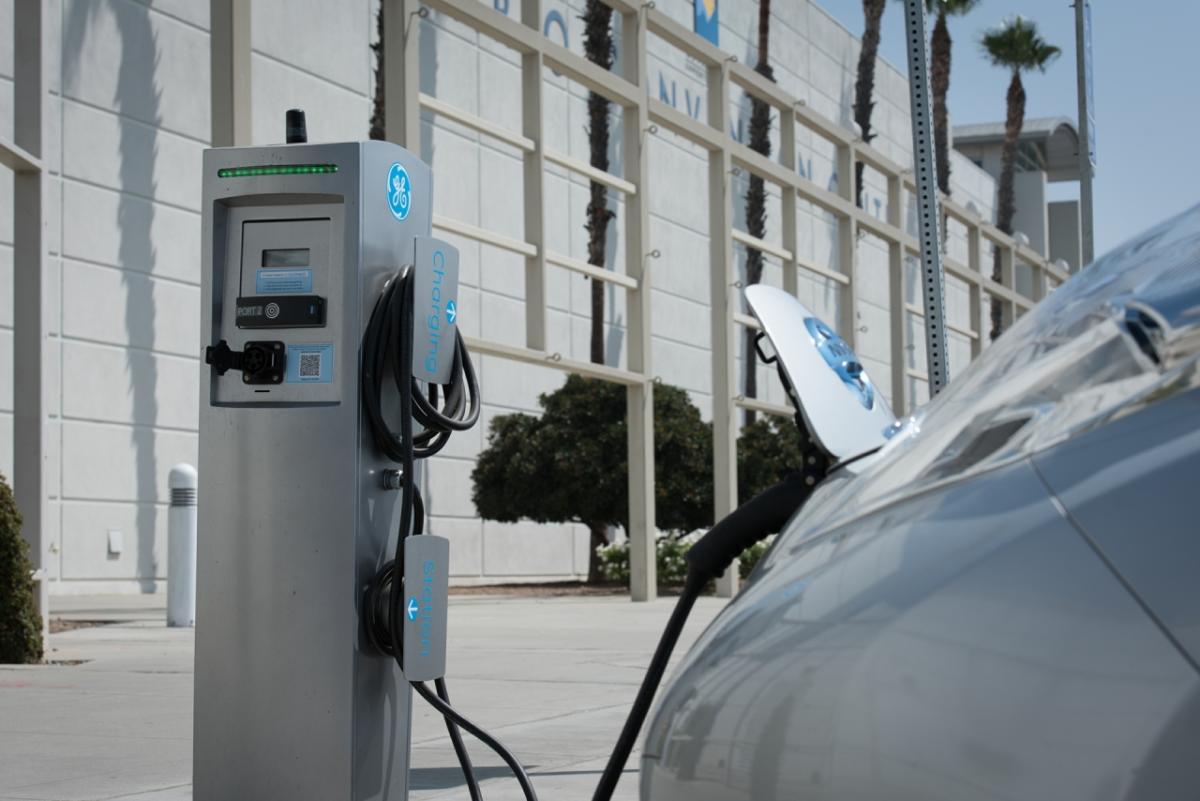At Clean Energy Summit, EVs and SCE Take Center Stage
Edison International outlines ambitious efforts to power the rapidly accelerating transportation electrification market.
Originally published on Energized by Edison
By: Casey Wian, Energized by Edison Writer
At the Bloomberg NEF Summit, leaders of the global movement to electrify transportation spoke out, and Edison International delivered a clear message: The growth of electric vehicles and the infrastructure to support them needs to accelerate rapidly and must include underserved communities.
“Southern California Edison is working on programs that will help our customers to adopt electric vehicles,” said Caroline Choi, Edison International and SCE senior vice president of Corporate Affairs and opening speaker at the two-day summit in San Francisco. “A big place for us to play a role is around infrastructure. We have the largest investor-owned utility transportation electrification program in the country, with almost $800 million going in for infrastructure.”
Choi referenced a recent study by the California Air Resources Board that found that California needs to have nearly 8 million EVs by 2030 to reach the state’s carbon emission reduction goals. That’s an eight-fold increase over the 1 million EVs on the state’s roads today. At the same time, the number of EV chargers needs to triple.
Among SCE’s efforts:
- Charge Ready - to support approximately 38,000 passenger vehicle chargers at multi-unit dwellings, workplaces and destination centers across SCE’s 50,000-square-mile service area
- Charge Ready Transport - to support almost 8,500 medium- and heavy-duty trucks, buses and off-road industrial equipment
- Rebates ranging from $1,000-$4,000 - for the purchase of pre-owned EVs
To ensure that a wide range of its customers can benefit from transportation electrification, SCE developed programs with a substantial social equity component. For example, 40% of the new charging infrastructure for medium- and heavy-duty vehicles and half of the light-duty vehicle chargers will be deployed in underserved communities.
“The things that we’ve seen as hurdles to electric vehicle adoption: affordability, awareness, accessibility of charging continue to be the hurdles we try to tackle,” Choi said. “The Charge Ready program we have, part of it is education and marketing for people to be aware of those programs that drive down costs.”
Following her opening remarks, Choi participated in a panel discussion titled, “Driving Toward Net Zero Transport Emissions.” The industry leaders' consensus is that transportation electrification is growing faster than even they thought possible several years ago.
“We have grown our business in charging infrastructure roughly by 50% year over year for the last four years,” said Frank Muehlon, E-mobility division president of ABB, a European EV charging equipment manufacturer. “We have deployed together with our partners and customers more than half a million EV chargers globally and more than 30,000 fast chargers globally.”
Choi and others spoke about the likelihood that fleet customers will be the critical drivers of widespread EV adoption. SCE is preparing to make more investments in the electric grid to meet anticipated demands for power.
“It is going to take changes in the way we plan our business to accommodate our customers, especially as fleet electrification advances more quickly. Some of these companies, such as Amazon and UPS, have the means that once we’re past the pilot phase, they will move very quickly into the adoption of the vehicles,” Choi said.
“Everybody who tries an EV wants to keep driving it. The fleet operators are desperately waiting for the medium- and heavy-duty vehicles to come in scale,” said Jonathan Levy, chief commercial officer at EVgo. “In the meantime, companies like EVgo, ABB and SCE are working across the value chain to say, yes, we are enabling and benefiting from this adoption curve, and we’re going to be accelerating it together.”




